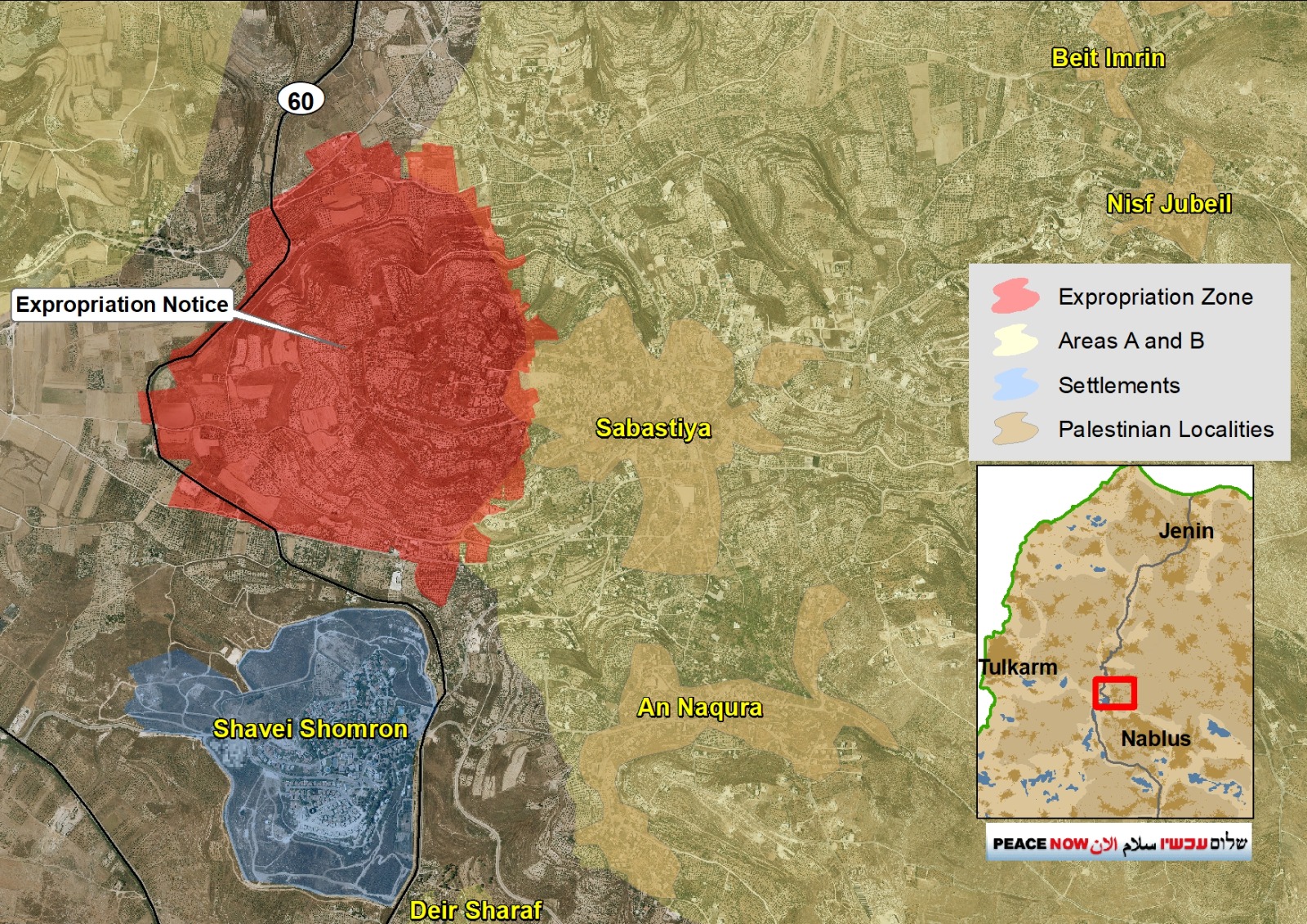The Civil Administration has announced its intention to seize roughly 1,800 dunams at the archaeological site of Sebastia — the largest land appropriation for antiquities ever recorded, adjacent to the village homes and to Area B, and affecting thousands of dunams of privately owned olive groves.
In a public notice, the authority said it plans to expropriate the Sebastia archaeological site for development and to prepare it for public visits. The move is highly unusual, both because of the site’s location and because it is carried out under an administrative order for antiquities.
The plan would seize nearly 1,800 dunams belonging to the Palestinian villages of Burqa and Sebastia, including thousands of olive trees. The land is privately owned and registered in the land registry by Palestinian owners. Residents and landowners have been given 14 days to file objections to prevent the order from taking effect. The government has also allocated more than 30 million shekels for developing the Sebastia site.
Peace Now: “The Israeli government’s drive for dispossession and annexation knows no limits, and it is prepared to violate international law openly to pursue it. This is part of a broader effort to take control and expand settlements in areas northwest of Nablus that Israel evacuated during the disengagement. Sebastia is a heritage site located inside a Palestinian village, part of its history and part of a future Palestinian state. Under the Oslo Accords, signed by Israel, it should have been transferred to Palestinian administration long ago. Israeli greed harms not only the landowners, but also the prospect of a peaceful solution that upholds the rights and heritage of both peoples.”
Land expropriations for antiquities development have been carried out in the West Bank, to the best of our knowledge, five times since 1967:
- 1982: Two dunams were taken at the ancient synagogue in Jericho.
- 1985: 286 dunams were taken from the village of Susya in the South Hebron Hills, its residents were expelled, and the site was later placed under the Hebron Hills Regional Council. Palestinians may enter only by paying the Israel Nature and Parks Authority.
- 2020: About 24 dunams were expropriated at the Deir Qal’a and Deir Samaan sites.
- February 2023: 139 dunams were taken at the Archelais site in the Jordan Valley.
In the cases of Deir Qal’a and Deir Samaan, the sites now lie inside the settlements of Alei Zahav and Peduel, and Palestinians have no access to them.
In all cases, the expropriations were formally defined as serving a public purpose, but in practice, they led to the exclusion of Palestinians from the sites. Under international law governing occupied territories, public-purpose expropriations are permitted only when they serve the needs of the local population.
The Sebastia case is especially unusual because the expropriation targets an archaeological site that has long served as an economic, cultural, and tourism anchor for residents of Sebastia and the surrounding area, and that has been open to the public.
Around the site are souvenir shops and restaurants, and in Sebastia itself, many residents earn their living from guiding visitors and renting rooms to tourists. The Sebastia site lies inside the village, among residents’ homes. The expropriation concerns the western part of the site, an area with fewer homes and surrounded by olive groves.
The scope of the expropriation is exceptionally large. To develop the site, authorities approved the seizure of 1,800 dunams. Until now, the largest expropriation for antiquities was in Susya, involving 286 dunams. Although most of the Sebastia area slated for expropriation has been designated as archaeological land, the part of the site that visitors currently tour covers only about 60 dunams.
The expropriation notice follows earlier government steps regarding Sebastia. In 2023, the Israeli government approved a 32-million-shekel plan to develop the site, and in 2025, the Civil Administration began archaeological excavations there.
A short distance from the ancient site is the Mas’udiya (Sebastia) railway station, where the government has begun building a tourism settlement. Using tourism for settlement purposes is not new, but in the northern West Bank, it appears to be part of wider development plans that include establishing the Homesh and Sa-Nur settlements and linking tourism with settlement expansion.
International law permits land expropriation in occupied territory only when it serves the needs of the occupied population. In the case of Sebastia, it is unclear how the expropriation would benefit Palestinians. The development would ease access for Israelis and, at the same time, exclude Palestinians from their land and from the archaeological site.
The Sebastia site is identified with the capital of the biblical Kingdom of Israel, known as Samaria. It contains remains of the city built by Herod in the first century BCE in honor of Augustus, after whom he named it Sebastia. The site includes striking remains from the Kingdom of Israel, the Roman, Byzantine, and Crusader periods, and others.


